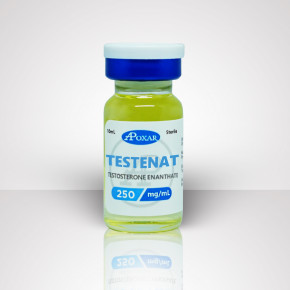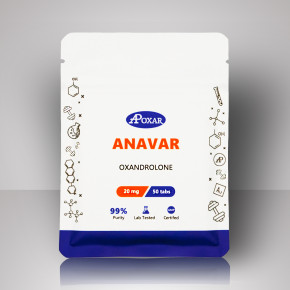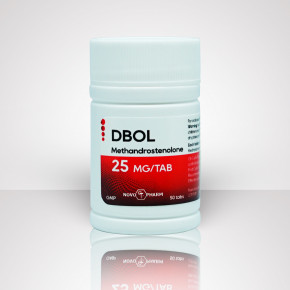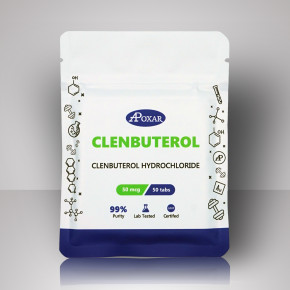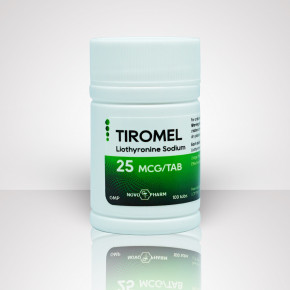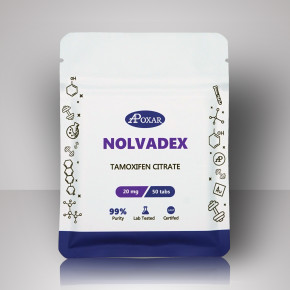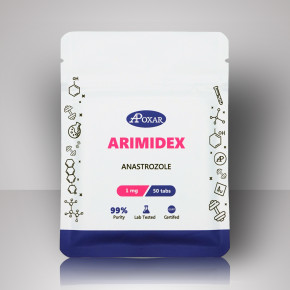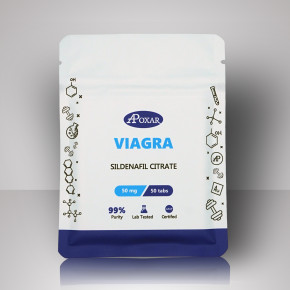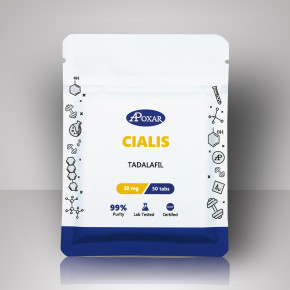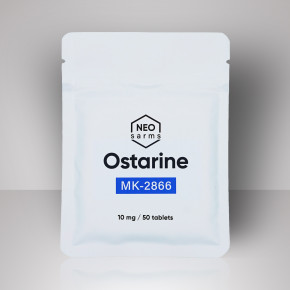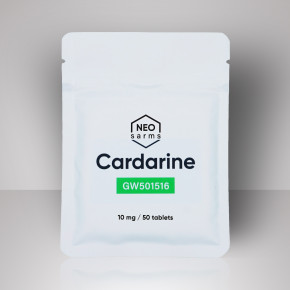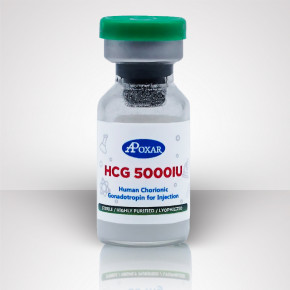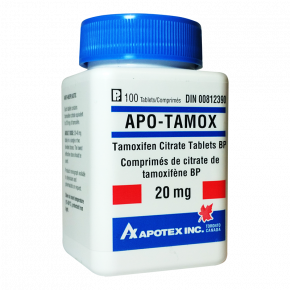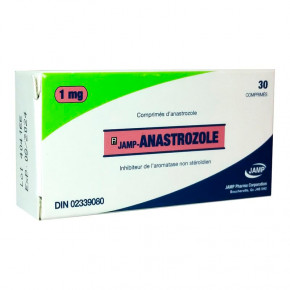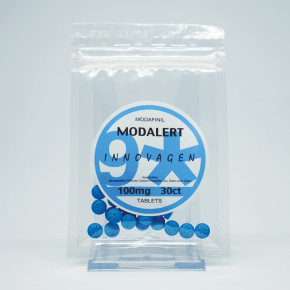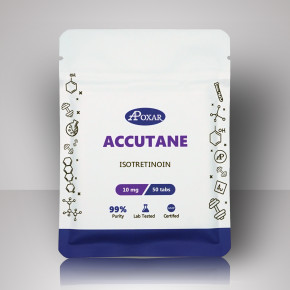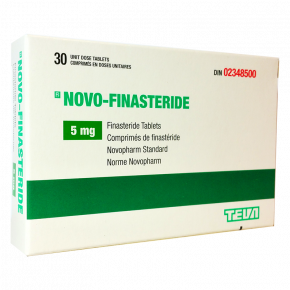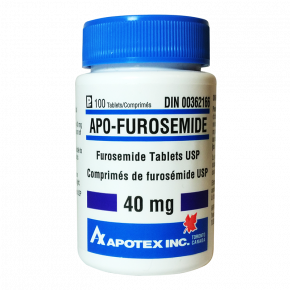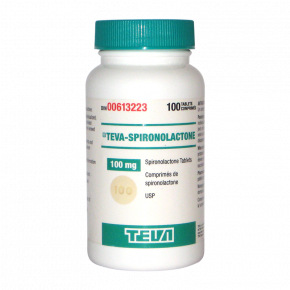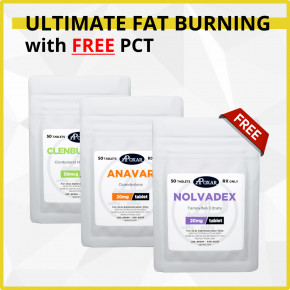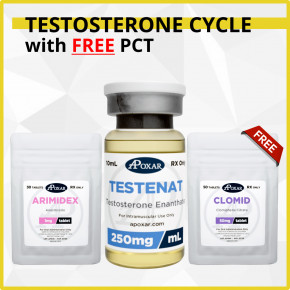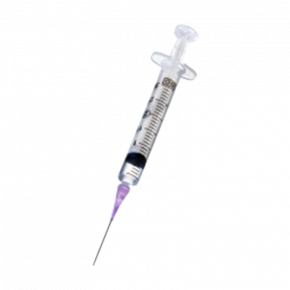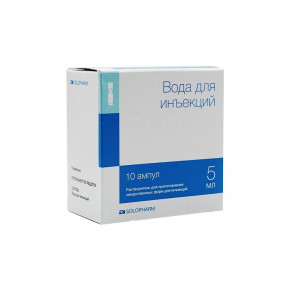 Proudly Serving Canadians Since 2012
Proudly Serving Canadians Since 2012Anadrol - Oxymetholone
Oxymetholone is a most potent oral anabolic steroid that is used by bodybuilders to gain a muscle mass. Provide a significant boost at the start of the steroid cycle. Increases prolactin, use with Caber. 25-150mg/day 6-8 weeks
-
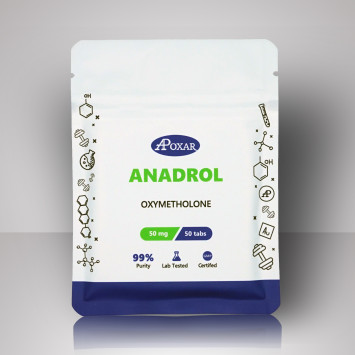
Anadrol - Oxymetholone 50mg/50tabs - Apoxar
Oxymetholone is a most potent oral anabolic steroid that is used by bodybuilders to gain a muscle mass. Provides a significant boost at the start of the steroid cycle.
- Usage: Men 50-100 mg/day
- Cycle Duration: 4-6 weeks for optimal results
- Aromatization: No. But increases prolactin, use with Caber 1 mg twice a week.
- Post Cycle Therapy: Clomid 100mg/day for 2 weeks, then 50mg/day for another 2 weeks
- Stack With: Testosterone Enanthate/Boldenone/Trenbolone for muscle mass as kick starter
Increases Strength
Improves Sex Drive
Muscle Gains
$100.00 -
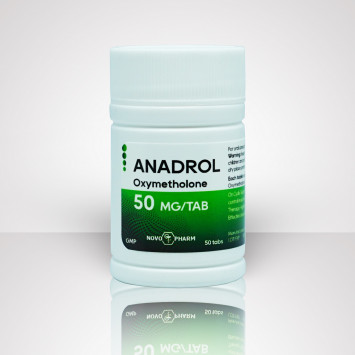
Anadrol - Oxymetholone 50mg/50tabs - NovoPharm
Oxymetholone is a most potent oral anabolic steroid that is used by bodybuilders to gain a muscle mass. Provide a significant boost at the start of the steroid cycle.
- Usage: Men 50-100 mg/day
- Cycle Duration: 4-6 weeks for optimal results
- Aromatization: No. But increases prolactin, use with Caber 1 mg twice a week.
- Post Cycle Therapy: Clomid 100mg/day for 2 weeks, then 50mg/day for another 2 weeks
- Stack With: Testosterone Enanthate/Boldenone/Trenbolone for muscle mass as kick starter
Increases Strength
Improves Sex Drive
Muscle Gains
$95.00
Anadrol
Anadrol is a trade name for oxymetholone, a potent oral anabolic steroid derived from dihydrotestosterone. More specifically, it is a close cousin of methyl dihydrotestosterone (mestanolone), differing only by the addition of a 2-hydroxy methylene group. This creates a steroid with considerably different activity than mestanolone, however, such that it is very difficult to draw comparisons between the two. For starters, oxymetholone is a very potent anabolic hormone. Dihydrotestosterone and mestanolone are both very weak in this regard, owing to the fact that these molecules are not very stable in the high enzyme (3-alpha hydroxysteroid dehydrogenase) environment of muscle tissue. Oxymetholone remains highly active here instead, as is reported in standard animal assay tests demonstrating a significantly higher anabolic activity than testosterone or methyltestosterone. Such assays suggest the androgenicity of oxymetholone is also very low (1/4th to 1/7th its anabolic activity), although real-world results in humans suggest it is decidedly higher than that.
Oxymetholone is considered by many to be the most powerful steroid commercially available. A steroid novice experimenting with this agent is likely to gain 20 to 30 pounds of massive bulk, and it can often be accomplished within 6 weeks of use. This steroid produces a lot of water retention, so a good portion of this gain is going to be water weight. This is often of little consequence to the user, who may be feeling very big and strong while taking oxymetholone. Although the smooth look that results from water retention is often not attractive, it can aid quite a bit to the level of size and strength gained. The muscle is fuller, will contract better, and is provided a level of protection in the form of extra water held into and around connective tissues. This will allow for more elasticity, and will hopefully decrease the chance for injury when lifting heavy. It should be noted, however, that a very rapid gain in mass might also place too much stress on your connective tissues. The tearing of pectoral and biceps tissue is commonly associated with heavy lifting while massing up on steroids, and oxymetholone is a common offender. There can be such a thing as gaining too fast.
History
Oxymetholone was first described in 1959.1 The agent was released in the United States as a prescription drug during the early 1960s, sold under the brand names Anadrol-50 (Syntex) and Androyd (Parke Davis & Co.). Syntex developed the agent and would hold patent rights to it until their expiration many years later. The drug was originally approved for use in conditions where anabolic action was necessary. Indicated uses included geriatric debilitation, chronic underweight states, pre- and postoperative preservation of lean mass, convalescence from infection, gastrointestinal disease, osteoporosis, and general catabolic conditions. The recommended dose for such uses was usually 2.5 mg three times per day. The drug was originally supplied in 2.5 mg, 5 mg, or 10 mg tablet.
In spite of the many potential therapeutic uses or a strong anabolic activity of this drug, the FDA soon strictly narrowed the indicated uses of oxymetholone. By the mid-1970s, the drug was FDA approved only for the indicated treatment of anemia characterized by deficient red blood cell (RBC) production. Admittedly the stimulation of erythropoiesis is an affect that is characteristic of nearly all anabolic steroids, which as a group tend to increase RBC concentrations. Oxymetholone, however, seemed fairly reliable in this regard; demonstrating an increase in erythropoietin levels as much as 5 fold.1 This has led to its adoption for this relatively new medical use, as well as the institution of a higher (50 mg) dosage with the updated Anadrol-50 product, necessary for a stronger effect on RBC count. The Parke Davis item would not be brought up to the higher dosage, however, and was discontinued.
Recent years have brought forth a number of new treatments for anemia, most notably Epogen (recombinant erythropoietin) and related erythropoietic peptides. These drugs directly mimic the body’s natural red blood cell producing hormone, and as such provide a much more focused form of therapy, with less of the unrelated side effects one would have to endure with the use of a strong androgen. Although Anadrol was once viewed as an effective drug for this purpose, sales were now dropping. Financial disinterest finally prompted Syntex to halt production of the U.S. Anadrol 50 in 1993, which was around the same time they decided to drop this item in a number of foreign countries. Plenastril from Switzerland and Austria was dropped; following soon was Oxitosona from Spain. During the mid-1990s, many Athletes feared oxymetholone was on the way out for good.
In July 1997, Syntex sold all rights to Anadrol-50 in the U.S., Canada, and Mexico to Unimed Pharmaceuticals. Unimed reintroduced Anadrol-50 to the U.S. market in 1998, this time targeting HIV/AIDS patients. Patients with HIV are commonly anemic, often caused by the disease itself, opportunistic infections, or the antiretroviral drugs used to treat the disease. The anemia in HIV patients is typically categorized by impaired red blood cell production in bone marrow, the FDA approved indication for oxymetholone use. Adding to this, oxymetholone was showing great promise in studies combating HIV associated wasting. Unimed soon initiated Phase II/III trials with Anadrol for HIV wasting syndrome and continued to research its use for treating such things as chronic obstructive pulmonary disease and lipodystrophy (a disorder characterized by a selective loss of body fat, insulin resistance, diabetes, high triglycerides levels, and a fatty liver).
In April 2006, Solvay Pharmaceuticals (parent company of Unimed) sold the rights to Anadrol-50 to Alaven Pharmaceutical, LLC. Alaven continues to market the drug in the United States, although given the transition it is uncertain what additional uses the company plans to pursue with oxymetholone. At the present time, the only FDA approved indication remains that of treating red blood cell-deficient anemia. Syntex seems to have removed itself from the oxymetholone market globally, discontinuing a product or transferring the license to other companies whenever possible. Oxymetholone remains available outside of the United States, although it is mostly still sold in smaller and less tightly regulated markets.
How Supplied
Oxymetholone is available in select human drug markets. Composition and dosage may vary by country and manufacturer. Most brands contain 50 mg of steroid per tablet.
Structural Characteristics
Oxymetholone is a modified form of dihydrotestosterone. It differs by 1) the addition of a methyl group at carbon 17-alpha, which helps protect the hormone during oral administration, and 2) the introduction of a 2-hydroxy methylene group, which inhibits its metabolism by the 3-hsd enzyme and greatly enhances the anabolic and relative biological activity of methyl dihydrotestosterone.
Side Effects (Estrogenic)
Oxymetholone is a highly estrogenic steroid. Gynecomastia is often a concern during treatment and may present itself quite early into a cycle (particularly when higher doses are used). At the same time, water retention can become a problem, causing a notable loss of muscle definition as both subcutaneous water retention and fat levels to build. To avoid strong estrogenic side effects, it may be necessary to use an anti-estrogen such as Nolvadex® or Clomid®.
It is important to note that oxymetholone does not directly convert to estrogen in the body. This steroid is a derivative of dihydrotestosterone, and as such cannot be aromatized. Anti-aromatase compounds such as Cytadren and Arimidex® will, likewise, not effect the relative estrogenicity of this steroid. Some have suggested that the high level of estrogenic activity in oxymetholone is actually due to the drug acting as a progestin, similar to nandrolone. The side effects of both estrogens and progestins can be very similar, which might have made this explanation a plausible one. There was a medical study examining the progestational activity of oxymetholone, however, and it determined that there was no such activity present.2 With such findings, it seems most plausible that oxymetholone can activate the estrogen receptor, similar to, but more profoundly than, the estrogenic androgen methandriol.
Side Effects (Androgenic)
Although oxymetholone is classified as an anabolic steroid, androgenic side effects are still possible with this substance. These may include bouts of oily skin, acne, and body/facial hair growth. Higher doses are more likely to cause such side effects. Anabolic/androgenic steroids may also aggravate male pattern hair loss. Women are additionally warned of the potential virilizing effects of anabolic/androgenic steroids. These may include a deepening of the voice, menstrual irregularities, changes in skin texture, facial hair growth, and clitoral enlargement. While Anadrol is classified as an anabolic steroid, it does retain a notable androgenic component.
It is interesting to note that oxymetholone does exhibit some tendency to convert to dihydrotestosterone in the body, although this does not occur via the 5-alpha reductase enzyme. Oxymetholone is already a dihydrotestosterone-based steroid, so no such alteration can take place. Aside from the added c-17 alpha alkylation (discussed below), oxymetholone differs from DHT only by the addition of a 2-hydroxy methylene group. This grouping can be removed metabolically, reducing oxymetholone to the potent androgen 17alpha-methyl dihydrotestosterone (mestanolone).3 There is little doubt that this biotransformation contributes at least on some level to the androgenic nature of this steroid. Note that since 5-alpha reductase is not involved, the relative androgenicity of oxymetholone is not affected by the concurrent use of finasteride or dutasteride.
Side Effects (Hepatotoxicity)
Anadrol is a c17-alpha alkylated compound. This alteration protects the drug from deactivation by the liver, allowing a very high percentage of the drug entry into the bloodstream following oral administration. C17-alpha-alkylated anabolic/androgenic steroids can be hepatotoxic. Prolonged or high exposure may result in liver damage. In rare instances, life-threatening dysfunction may develop. It is advisable to visit a physician periodically during each cycle to monitor liver function and overall health. Intake of c17-alpha-alkylated steroids is commonly limited to 6-8 weeks, in an effort to avoid escalating liver strain.
Oxymetholone has a saturated A-ring, which slightly reduces its relative hepatotoxicity.4 Still, this agent, particularly at the doses commonly used, can present substantial hepatotoxicity to the user. Studies administering 50 mg or 100 mg daily to 31 elderly men for 12 weeks produced significant increases in liver enzymes (transaminases AST and ALT) only in patients taking 100 mg. A second study administering 50 mg daily to 30 patients for up to and exceeding one year (in some patients) has demonstrated elevations in y-glutamyltransferase (GGT) in 17% of patients, significant increases in bilirubin in 10%, and serum albumin increases in 20%. One patient developed a liver tumor that could have been peliosis hepatitis, a life-threatening adverse event characterized by blood-filled cysts in the liver. A small number of other cases of peliosis hepatitis have been linked to oxymetholone, suggesting the potential for hepatotoxicity should still be carefully considered before use.
The use of a liver detoxification supplement such as Liver Stabil, Liv-52, or Essentiale Forte is advised while taking any hepatotoxic anabolic/androgenic steroids.
Anabolic/androgenic steroids can have deleterious effects on serum cholesterol. This includes a tendency to reduce HDL (good) cholesterol values and increase LDL (bad) cholesterol values, which may shift the HDL to LDL balance in a direction that favors greater risk of arteriosclerosis. The relative impact of an anabolic/androgenic steroid on serum lipids is dependant on the dose, route of administration (oral vs. injectable), type of steroid (aromatizable or non-aromatizable), and level of resistance to hepatic metabolism. Anabolic/androgenic steroids may also adversely affect blood pressure and triglycerides, reduce endothelial relaxation, and support left ventricular hypertrophy, all potentially increasing the risk of cardiovascular disease and myocardial infarction.
Oxymetholone has a strong effect on the hepatic management of cholesterol due to its structural resistance to liver breakdown and route of administration. Studies administering 50 mg or 100 mg daily to a group of elderly men for 12 weeks have demonstrated insignificant increases in LDL cholesterol, accompanied by very significant (dramatic) suppressions of HDL cholesterol (reduced 19 and 23 points in the 50 mg and 100 mg groups, respectively). The use of oxymetholone should be undertaken only after careful consideration in people with high cholesterol or a familial history of heart disease.
To help reduce cardiovascular strain it is advised to maintain an active cardiovascular exercise program and minimize the intake of saturated fats, cholesterol, and simple carbohydrates at all times during active AAS administration. Supplementing with fish oils (4 grams per day) and a natural cholesterol/antioxidant formula such as Lipid Stabil or a product with comparable ingredients is also recommended.
Side Effects (Testosterone Suppression)
All anabolic/androgenic steroids, when taken in doses sufficient to promote muscle gain, are expected to suppress endogenous testosterone production. Without the intervention of testosterone stimulating substances, testosterone levels should return to normal within 1-4 months of drug secession. Note that prolonged hypogonadotrophic hypogonadism can develop secondary to steroid abuse, necessitating medical intervention.
Note that when discontinuing Anadrol, the crash can be as equally powerful as the on-cycle results. To begin with, the level of water retention will quickly diminish, dropping the user’s body weight dramatically. This should be expected, and not of much concern. What is usually of most concern is restoring endogenous testosterone production with a proper PCT program. Before going off, some alternately choose to first switch over to a milder injectable like Deca-Durabolin® for several weeks. This is in an effort to “harden up the new mass,” and can prove to be an effective practice, at least from a mental standpoint. A drop of weight is likely when making the switch, although the end result is still often viewed as allowing the retention of more (quality) muscle mass. It is sort of stepping down, first off the water retention, and weeks later finally off the hormones. Remember ancillaries though, as testosterone production will not be rebounding during Deca therapy.
Administration (General)
Studies have shown that taking an oral anabolic steroid with food may decrease its bioavailability. This is caused by the fat-soluble nature of steroid hormones, which can allow some of the drug to dissolve with undigested dietary fat, reducing its absorption from the gastrointestinal tract. For maximum utilization, this steroid should be taken on an empty stomach.
Administration (Men)
Early prescribing guidelines for oxymetholone recommended a dosage of 2.5 mg three times per day to reverse the wasting process and provide lean body mass gain. Doses as high as 30 mg were employed in some cases. Current prescribing guidelines recommend a dosage of 1-5 mg per kilogram of body weight per day for treating anemia, although indicate that a dose of 1-2 mg/kg is typically sufficient. A 175-pound person would take approximately 150 mg per day at the 2 mg/kg dosage level. In some other countries, it is recommended to limit the dosing of oxymetholone to 100 mg per day. Therapy is usually given for a minimum of three to six months. When used for physique- or performance-enhancing purposes, an effective oral daily dosage would fall in the range of 25-150 mg, taken in cycles lasting no more than 6-8 weeks to minimize hepatotoxicity. This level is sufficient for dramatic increases in muscle mass and strength. Higher doses are rarely administered due to the strong estrogenic nature of the drug, as well as the high potential for hepatotoxicity. When used for physique- or performance-enhancing purposes, an effective oral daily dosage would fall in the range of 25-150 mg, taken in cycles lasting no more than 6-8 weeks to minimize hepatotoxicity. This level is sufficient for dramatic increases in muscle mass and strength. Higher doses are rarely administered due to the strong estrogenic nature of the drug, as well as the high potential for hepatotoxicity.
Administration (Women)
Prescribing information for oxymetholone in the U.S. makes no distinction with the dose for females. Oxymetholone is generally not recommended for women for physique- or performance-enhancing purposes due to its very strong nature and tendency to produce virilizing side effects.
Availability
Pharmaceutical preparations containing oxymetholone are fairly limited. The legitimate supply seems to be scattered into isolated markets of Europe, Asia, and the Americas. Most of the supply for this drug comes in the form of underground and export-only products.
References:
- Oxymetholone treatment for the anemia of bone marrow failure. Alexanian R, Nadell J, et al. Blood. 1972; 40:353-6.
- Les hormones anabolisantes du point de vue experimental. P.A. Desaulles. Helv. Med. Acta 1960:479-503.
- Studies on anabolic steroids-8. GC/MS characterization of unusual seco acidic metabolites of oxymetholone in human urine. J Steroid Biochem Mol Bio 42 (1992):229-42.
- Effects of various 17 alpha alkyl substitutions and structural modifications oof steroids on sulfobromophthalein (BSP) renention in rabbits. Lennon HD et al. Steroids 7 (1966): 157-70.

